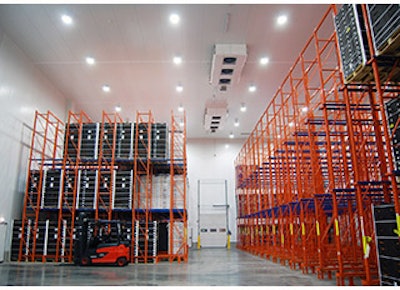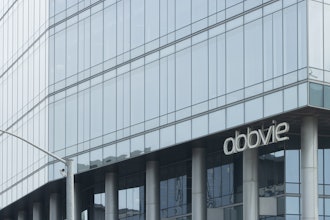
For chemical processing facilities, LED's can be a solution to ever-present concerns about energy efficiency, cost efficiency and overall lighting performance when building new and retrofitting old plants. In an effort to investigate their potential further, Chem.Info sat down with Andrew Struhs and Devin Sikorski from Dialight, who answered some questions about LED's benefits for processors.
What are some of the key benefits processors are experiencing from using LED technology?
There are several benefits LED technology holds over traditional HID lighting that are key to the overall efficiency of a processing plant. LED technology is extremely durable and reliable, with the ability to handle areas of high vibration and shock. The wide ambient temperature range and excellent T-ratings of LED lighting fixtures are also major benefits for hazardous areas of these processing facilities.
The exceptional color and light quality from LED fixtures is an improvement from that of High Pressure Sodium, which averages a color rendering index (CRI) of 30 or less. LED manufacturers consistently provide fixtures that carry a CRI greater than 70 for easier gauge and object identification, as well as a crisp and clear white light for improved safety on the work floor. LED technology also contains no hazardous materials and has instant-on capability, which are two critical characteristics for processing plants.
Chemical processing facilities are commonly known to have extremely harsh environments and they need a durable and efficient lighting solution that is able to handle it. With traditional HID lighting being notoriously unreliable in these settings, processing plants should look to LED technology as a viable solution.
What ways can processors utilize LED technology to boost efficiency in their plants?
For chemical processing plants looking to boost efficiency in their facilities, there is no simpler way to reduce their carbon footprint than by switching out traditional HID lighting with LED technology. As the most the efficient and durable lighting solution available, LED technology provides the best option for these facilities to significantly reduce energy consumption and maintenance costs.
For instance, processing facilities are now able to replace their 400 Watt Metal Halide fixtures with 163 Watt LED fixtures. Not only will this provide a massive cut in electricity use and maintenance costs but will also provide improved color rendering and quality of light that is crucial to safety on the work floor.
Does the use of LED technologies connect to any other aspects of energy efficiency regarding other parts of the processing plants?
With LED technology is rapidly becoming the go-to-choice for an energy efficient lighting solution, utilities are increasing the amount of rebates available for commercial and industrial solutions. Along with rebates for HVAC systems and other critical components for a processing facility, LED lighting can now be packaged with a complete energy-efficient overhaul that can mean serious savings for a chemical processing plant across the country.
If switching to LEDs, what should processors be aware of?
When making the switch to an LED lighting solution, it is important chemical processing facilities make sure they are purchasing a quality fixture from a reputable source. There are a wide range of LED manufacturers so a chemical processing facility must make sure they are asking the right questions before implementing this advanced lighting solution into their demanding environment.
LEDs are long-lasting and reliable but the weakest point is the driver – as opposed to the lamp being the most common point of failure for traditional technology. It is important to understand how LED manufacturers address this. Rather than going with a fixture using an off-the-shelf driver or power supply, the best LED manufacturers design their power supply in house as to have complete control over the quality and performance of the LED fixture.
It is also important to understand how these LED fixtures are managed optically and how a fixture producing the most lumens is not always the best situation. An LED fixture can deliver fewer lumens than traditional HID lighting but still put more light where it is needed if it is applying an advanced optical design.
Buyers should also understand that lumen depreciation for LEDs is very slow. Processing facilities would normally need to account for a 20 to 30 percent loss of lumens when dealing with a traditional fixture like metal halide in the first year of installation – this is not the case with the best manufactured LED fixtures.
Lastly, chemical processing facilities should always verify these key questions by asking for a third party report to ensure they are purchasing the most effective and reliable LED lighting solution available.
What sort of maintenance is completed with LED technologies to ensure optimum performance?
A key benefit of LED technology is the minimal maintenance needed to sustain proper lighting levels and performance. For facilities dealing with high maintenance costs, the superior durability and reliability of LED lighting provides a much-needed option for essentially eliminating these expenses. With the most advanced LED technology carrying an L70 rating of more than 100,000 hours, processing facilities can expect an increase in production and safety on the work floor with little or, in some cases, no maintenance costs.























